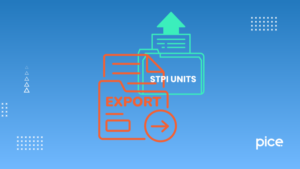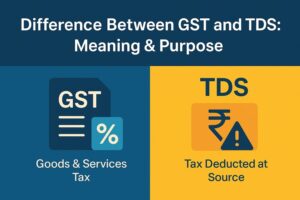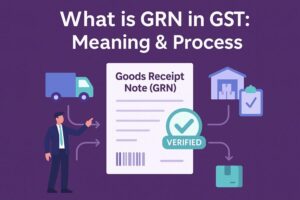How to Generate GST Challan?
- 22 Jan 25
- 8 mins

How to Generate GST Challan?
- Different Types of GST Challans
- When and Why Is a GST Challan Required?
- Benefits of Using GST Challan
- How to Generate a GST Challan?
- Methods of Payment for GST Challan
- How to Download a GST Challan?
- Modes to Choose for Making GST Payment
- Late Payment and Penalties for GST Challan
- How to Track the Status of GST Payments?
- Common Mistakes to Avoid When Generating a GST Challan
- Conclusion
Key Takeaways
- Generate a GST challan (PMT-06) online to initiate timely GST payments.
- Choose from flexible online and offline GST payment methods for convenience.
- Complete GST payments within 15 days of challan generation to avoid penalties.
- Late payments attract an 18% interest rate, stressing timely compliance.
- Track payment status and challan history in real-time via the GST portal.
GST (Goods and Services Tax) payment and return filing are essential for businesses in India to comply with tax laws. The first step to GST payment is GST challan creation, wherein all the proposed payment details are mentioned.
Knowing the GST challan in detail can help you avoid certain common mistakes while generating the GST challan online and making GST payments. Learn in detail what the GST Challan is here to avoid paying penalties, interest, or late fees associated with GST payments.
Different Types of GST Challans

A GST challan used to pay taxes, fees, and penalties under the GST system is of the following types:
- Challans for Tax Payments: Businesses need to use this challan to pay CGST (Central Goods and Services Tax), SGST (State Goods and Services Tax), or IGST (Integrated Goods and Services Tax).
- Challan for Interest: A delay in tax payment attracts interest, which needs to be paid using this challan.
- Challan for Penalty: On missed deadlines or for not following GST rules, businesses have to use this challan to pay penalties.
- Challan for Late Fees: Late GST return filing attracts a late payment fee, which needs to be paid using this challan.
When and Why Is a GST Challan Required?
You need a challan to pay your taxes and dues under the GST law in the following scenarios:
- Monthly or Quarterly Payments: A regular taxpayer has to create a payment challan to make monthly or quarterly GST payments.
- Ad-Hoc Payments: If a taxpayer has to make extra payments such as interest, late payment fees, or penalties, he/she needs a GST challan.
- Revised Filings: A change in GST returns resulting in more tax applicable demands the creation of a new challan.
Notably, to comply with GST law and avoid penalty imposition, ensure you create a GST challan when a payment is due.
Benefits of Using GST Challan
Here are the benefits of using a GST challan:
- Helps Track Tax Payments
GST challans help businesses maintain and track records of tax payments. Digital records of such challans further ensure that taxes are paid within the deadlines.
- Ensure Accuracy
As GST challans are available in digital format, it reduces errors in payment and enhances accuracy in GST filing. This ensures that the taxpayer pays the right amount to the Indian government.
- Offers Transparency
Digital records of GST challans help businesses know the exact amount they have paid. Thus, there can be transparency between businesses and the government in the GST payment process.
- Easily Accessible
As GST challans are available online, taxpayers or businesses can seamlessly access them for tax payments. They can access it whenever required to track the payments.
How to Generate a GST Challan?
Here is how to generate a GST challan:
Step 1: Log in to the unified GST portal using valid login credentials.
Step 2: Navigate to the ‘Services’ tab and select ‘Payment’.
Step 3: Select ‘Create Challan’.
Step 4: Enter the necessary details, including tax amount, interest, late fees, or penalty.
Step 5: Choose your convenient payment method from the payment options.
Ensure you fill in the details accurately to avoid issues in challan creation and GST payment.
Methods of Payment for GST Challan
You can make GST challan payments in the following methods:
- Online: You can use net banking, UPI or debit and credit cards for online payment.
- Over-the-counter: You can pay in cash or with a cheque at designated banks.
- Bank Transfer: You can transfer your payment directly from the bank through NEFT and RTGS.
Taxpayers can choose a mode of payment that is convenient. Notably, online payment provides instant confirmation, while other methods might require a few hours to process and update the details on the GST portal (online portal).
How to Download a GST Challan?
You can download a GST challan as a tax payment proof or for audits in the following way:
Step 1: Log in to the official GST portal using your credentials.
Step 2: Go to the ‘Payments’ option on the screen.
Step 3: You can see past payments by clicking on 'Challan History'.
Step 4: Select the challan you want to download.
Step 5: Click on the ‘Download’ button to complete and save the file.
Modes to Choose for Making GST Payment
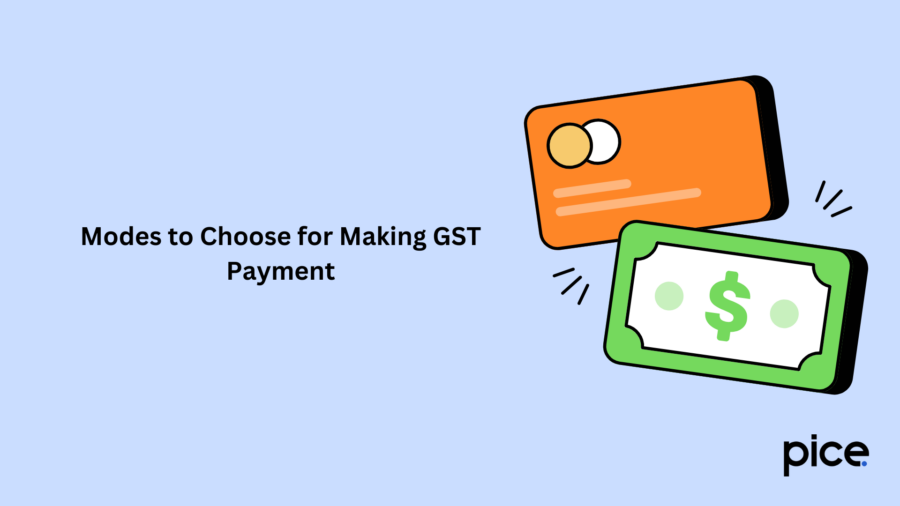
You can choose any of the following GST payment methods:
- Net Banking
Taxpayers can use net banking to make GST payments. As a taxpayer, you can log into your net banking account using a valid user ID and password to make payments directly to the government.
- Credit/Debit Cards
You can pay GST on the payment gateway on the GST portal using credit or debit cards. You can choose a credit or debit card based on your convenience for this payment method.
- E-Wallets
Using e-wallets is a popular payment method among businesses. They can add money to their e-wallet and pay taxes online using the money.
- Challan
Businesses can pay their GST at banks or online after they generate a challan on the GST portal. Banks accept payment based on the challan presented by the taxpayer.
Late Payment and Penalties for GST Challan
Here are the penalties and late payment fees application under the GST regulation:
Late Payment Fee for Not Filing Returns on Time
Taxpayers need to pay a late fee amounting to ₹100 per day for not filing GST returns within the deadline. The late fee increases for the number of days of delay up to ₹5,000.
Penalty for Not Registering Under GST
If you need to register under GST but have not registered, you will have to pay a penalty of 10% of the tax due or ₹10,000, whichever is higher.
Penalty for Incorrect Invoicing
If you issue an incorrect invoice, the government levies a penalty of ₹25,000 under the GST provisions.
Penalty for Not Issuing an Invoice
In case you fail to issue an invoice within the predefined timeline, you need to pay a penalty of up to ₹25,000.
Interest for Missed Deadline
If you miss a GST payment deadline, you need to pay an interest rate of 18% each year on the amount due.
How to Track the Status of GST Payments?
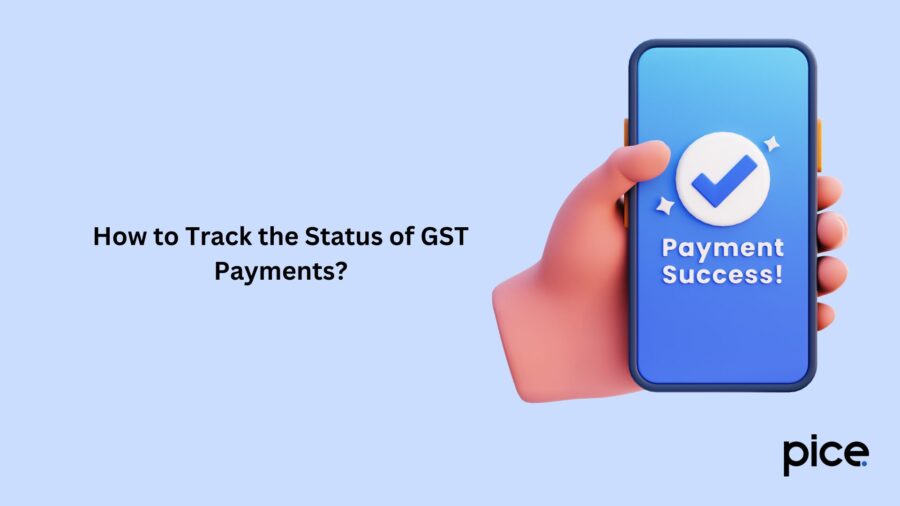
You can follow the steps mentioned below to track your GST payment status:
Step 1: Log in to the GST portal using your username and password.
Step 2: Go to the ‘Services’ tab on the dashboard.
Step 3: Choose the ‘Payments’ option from the dropdown menu.
Step 4: Navigate to ‘Challan History’ to view past GST payment records.
Step 5: Check the status to confirm if your payment is paid, failed, or pending.
Common Mistakes to Avoid When Generating a GST Challan
The common mistakes to avoid in the GST challan generation process are as follows:
- Filling in the wrong amount leads to excess or shortage of payment compared to dues.
- Choosing the wrong payment method can lead to additional charges and delays in payment. Ensure you make correct payments using offline payment methods or online payment methods to avoid the imposition of additional charges.
- Creating a GST challan on the last day or due date might lead to challenges if there are certain system errors.
- Entering the correct GSTIN (GST Identification Number) is essential as it identifies the tax payments for a concerned business. An incorrect GSTIN would indicate payment for a different business.
- Ensure you fill in all the necessary details in the challan to avoid issues and penalty payments later.
Conclusion
To answer what is a GST challan, it needs to be mentioned that it is a form that initiates GST payment for businesses in India. Creating a GST challan before the due date is essential to avoid paying penalties, late fees or interest on the tax dues. As a taxpayer, you can pay a GST challan amount using various methods, such as online, offline, or bank transfers, based on your convenience.
💡If you want to streamline your payment and make GST payments, consider using the PICE App. Explore the PICE App today and take your business to new heights.
 By
By 





